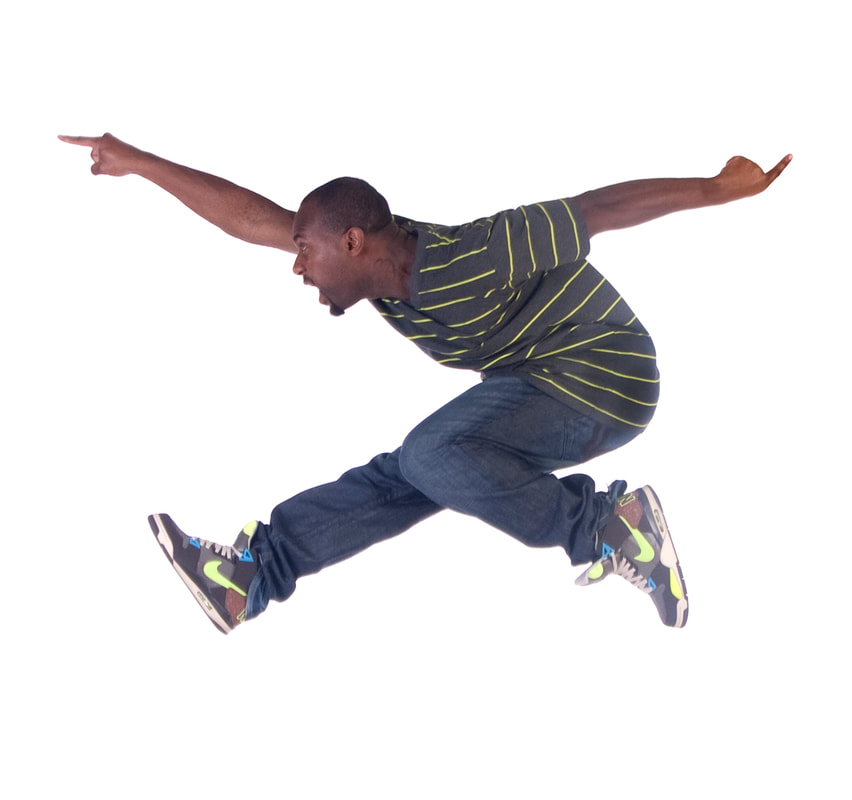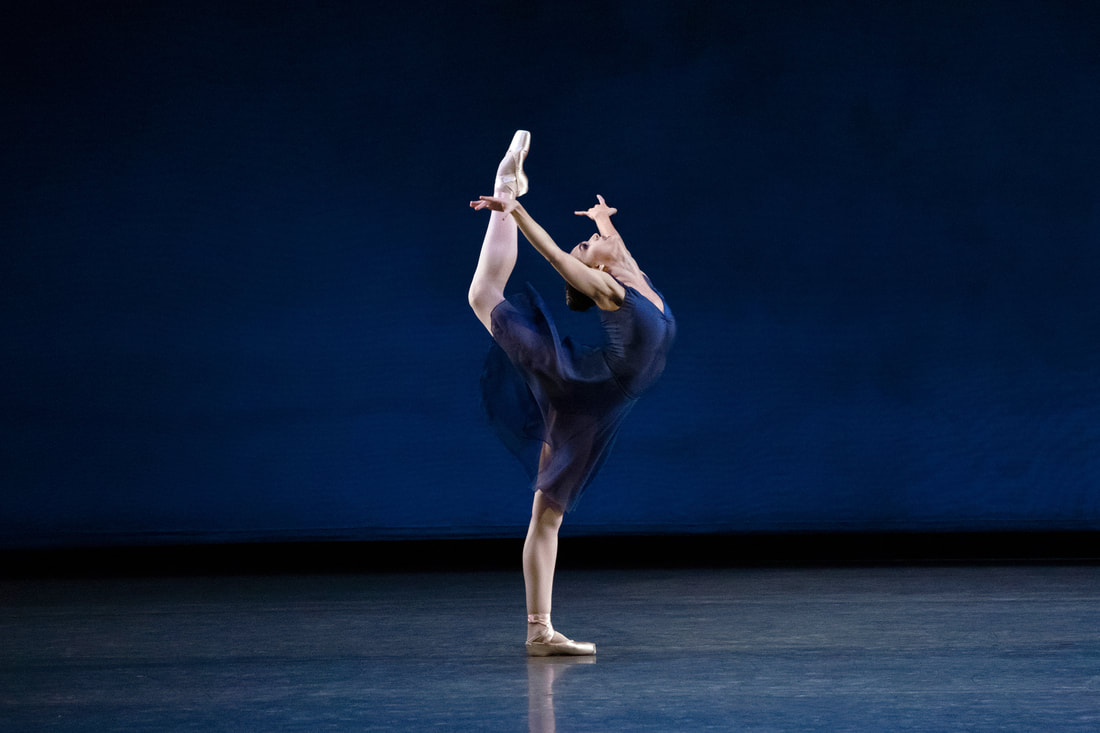|
Rennie Harris Puremovement American Street Dance Theater performed "Nuttin' But A Word" at The Egg on Friday night. (Photo by Brian Mengini) Rennie Harris has no peers.
He’s the only choreographer of street dance that is elevating the art so it can speak to the masses. And thus be appreciated by them too. His dances tell a story. His dances take advantage of stagecraft, creating a world audiences are willingly to immerse. His musical choices surprise, but are strangely ideal. Harris knows too what is pleasing to the eye, synchronicity and symmetry, so that attention remains trained on his amazing dancers. Watching his company, Rennie Harris Puremovement American Street Dance Theater performed on Friday night at The Egg, all I could think of was Harris is the George Balanchine of hip-hop. Harris lovely pushes the art beyond its roots without destroying its heart. He gives agency to hip-hop and club dance, thus proving its power should not be contained in the small display box it is now placed. All this could be seen in “Nuttin’ But A Word,” a work that lit up the stage. The program with just six dancers was an invigorating suite that acknowledges Harris’ innovations while upholding this highly personal dance style. It opens with Danzel Thompson-Stout, alone on stage, in “Worth.” He presents his struggle, revealed in his twisting and shaking and his falling and rebounding. He’s a seeker in world that doesn’t always allow entry to all. But as his spotlight disappears, so too do his barriers. It’s a somber and sobering opening to what follows, an explosion of unified energy that is staggering. The dancers – all in black loose fitting street clothes and sneakers — then join together in “Continuum,” where they recreate the dance circle, with each taking turns to show off their moves. Here, one sees the astounding technical capabilities of Harris’ dancers – fluent in street and club dancing as well as traditional African – a mix that is vibrant. While all of the dancers are wonderously adept, two stood out, Joshua Culbreath and Emily Pietruszka. Culbreath, slender and slight compared to the others, he dominated with his agility, speed and fluidity. Pietruszka, who somehow appeared in nearly every piece, was tireless and perfect — hitting the right moves hard and precise throughout the 75-minute duration of the show. Moreover, the musical selections were nothing one would expect – Al Jarreau’s syncopated “Round, Round, Round;” Cinematic Orchestra’s “Man with a Movie Camera” and Dharfar Youssef’s “Sacre The Wine Ode Suite.” Again, it shows Harris’ ability to move outside of hip-hop's current narrow confines that many artists indeed like to keep it. The evening ended with the exhilarating “Get Down or Lay Down,” set to Mandrill’s “Can, You Get It,” proving that Harris' company is tops, a giant growing and serving the art.
0 Comments
Lauren Lovette as she appeared on Saturday afternoon in Jerome Robbins' "Opus 19/The Dreamer" at Lincoln Center at her final performance with New York City Ballet, (Photo by Erin Baiano) After months of pandemic shutdowns and digital performances, New York City Ballet has rebooted, opening its Lincoln Center doors to patrons once again.
And while in-person performances are enthusiastically welcome, even for the staid New York audience, this season also marks endings. Principals Abi Stafford, Ask LaCour and Maria Kowroski are retiring. And so too is Lauren Lovette. The vivacious and spritely dancer made her final curtain call on Saturday afternoon in a program that revealed her ability to sweep up her audience in otherworldly romance. It started with Jerome Robbins “Opus 19/The Dreamer.” And then George Balanchine’s “Serenade,” In both, she was, as usual, charming. In “Opus 19/The Dreamer,” she danced the ethereal force that soothes the tortured soul of the dreamer, Joseph Gordon. He expressed his anguish by tossing his arms and head about as an army of 14 corps dancers watch over him – side stepping, but containing his distress. Among the corps emerges Lovette — who is a wave – moving in and out of Gordon’s dream as a balm. Yet she was also a power to propel him forward in a chase for the elusive embrace. Not surprisingly, Lovette was ideal. I like this work, set to Prokofiev’s Violin Concerto No. 1 in D Major with soloist Kurt Nikkanen, not only because it is spiritual, but because it is one of Robbins’ many nods to the masterful Balanchine. For example, Lovette’s part underscores Balanchine’s affection for women as mystical, unattainable creatures while Gordon’s part took inspiration from Balanchine’s “Apollo,” a portrait of a man struggling with himself. While a beautiful work, nothing is more satisfying than “Serenade.” This rightly beloved ballet, set to Tchaikovsky’s Serenade for Strings, was also perfect vehicle for Lovette who appeared as the woman touched by and transcending death. Her tiny frame revealed her sympathetic fragility. And the ending, with her being raised to the heavens in a surrendering backbend, was symbolic of Lovette’s departure. She gave her all to ballet and thus the audience, and now will ascend in honor to a new life chapter. The afternoon also included a pas de deux by Mauro Bigonzetti for Kowroski and Amar Ramasar, who himself will retire in the spring. “Amaria” or “to Maria,” is set to Scarlatti sonatas, as performed at the piano by Craig Baldwin. Kowroski, in slippers, and Ramasar entangled in a duet that emphasized their flexibility and long and limber limbs. But mainly, it too was symbolic, showing that both dancers – so central to City Ballet – are cutting their attachments, no longer marionettes for a choreographer, but forever strong, memorable figures just the same. Of course, as tradition dictates, the company joined Lovette onstage for her final, flower-filled bow – a moving tribute that will be repeated next week when Kowroski departs. It’s the dawn of a new era at City Ballet. |
Wendy
|


 RSS Feed
RSS Feed
